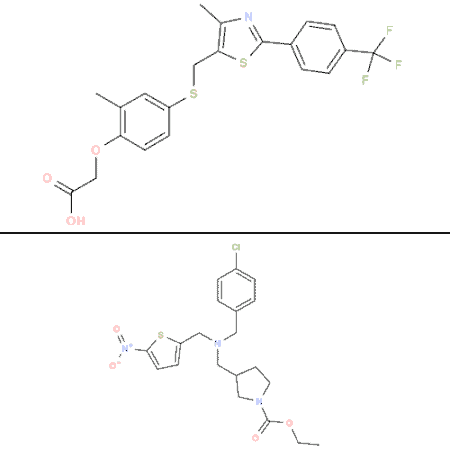Protocol for Researching the Endurance Bundle:
Cardarine – For research use only, 1 filled oral syringe daily. Cardarine can be researched for up to 12 weeks. A 6-week break is needed after 12 weeks of research, before beginning research again.
SR9009 – For research purposes only, 1 filled oral syringe daily. SR9009 can be researched for up to 8 weeks. After a cycle, a 30-day break should be taken before resuming research.
Cardarine
GW501516 was initially discovered during a research collaboration between GSK and Ligand Pharmaceuticals that began in 1992. The discovery of the compound was published in a 2001 issue of PNAS. Oliver et al. reported that they used “combinatorial chemistry and structure-based drug design” to develop it. One of the authors was the son of Leo Sternbach who discovered benzodiazepines in the 1960s.
R & D Focus Drug News reported that GSK began phase I trials of the compound for the treatment of hyperlipidemia in 2000 followed by phase I/II in 2002. In 2003, Ligand Pharmaceuticals earned a $1 million payment as a result of GSK continuing phase I development.
By 2007, GW501516 had completed two phase II clinical studies and other studies relating to obesity, diabetes, dyslipidemia and cardiovascular disease, but GSK abandoned further development of the drug in 2007 for reasons which were not disclosed at the time. It later emerged that the drug was discontinued because animal testing showed that the drug caused cancer to develop rapidly in several organs, at dosages of 3 mg/kg/day in both mice and rats.
Ronald M. Evans’s laboratory purchased a sample of GW501516 and gave mice a much higher dose than had been used in GSK’s experiments; they found that the compound dramatically increased the physical performance of the mice. The work was published in 2007 in Cell and was widely reported in the popular press including The New York Times and The Wall Street Journal.
SR9009
SR9009, also known as Stenabolic, is a research drug that was developed by professor Thomas Burris of the Scripps Research Institute as an agonist of Rev-ErbA (i.e., increases the constitutive repression of genes regulated by Rev-ErbA) with a half-maximum inhibitory concentration (IC50) = 670 nM for Rev-ErbAα and IC50 = 800 nM for Rev-ErbAβ. In an animal study, some of its effects were found to be independent of REV-ERB with an unknown mechanism of action.
Activation of Rev-ErbA-α by SR9009 in mice increases exercise capacity by increasing mitochondria counts in skeletal muscle.

